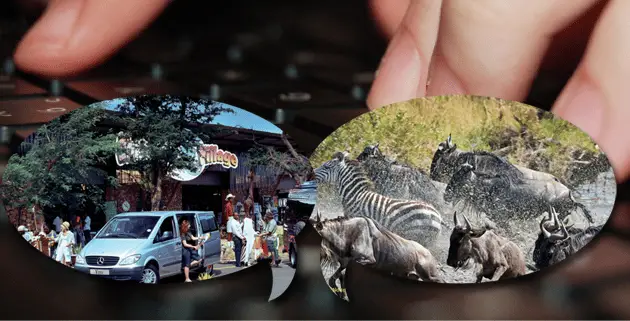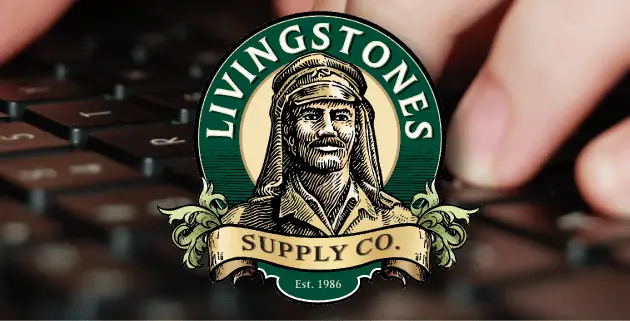New Discussion Forum
There is much to debate in tourism, but little time to write letters, so we’ve launched a Facebook ‘Article Discussion’ app that will enable readers to do just that – Ed.
As from February 2013 we have introduced a new feature on the Tourism Tattler’s Facebook page called ‘Article Discussions’. This is an open forum where you can voice your opinion, comment and discuss any article contained in the current issue of the Tourism Tattler together with other readers of the trade journal.
You may also want to raise a tourism related issue that you believe needs to be investigated and reported on. Our editorial team will take these issues up with the relevant authorities, or find an expert in the particular subject field, and publish the article.
Prize
Each month a prize will be awarded by the Tattler’s editorial team for what we perceive to be the best opinion or comment posted in the forum. The winner will be announced in each following monthly edition of the Tourism Tattler.
All articles published on the Tourism Tattler website, will contain banner links that point and lead you directly to the new Facebook Article Discussion page.
| How to contribute to article discussionsOn the Tourism Tattler website, click on the Article Discussion icon located above the ‘Share’ bar beneath each article – this will open the discussion page in a new browser tab.OR
On the Tourism Tattler Facebook page at www.facebook.com/www.tourismtattler.co.za, click on the Article Discussion icon located in the app bar. Then type away and share your views, which other readers can also contribute to. |
| To get the ball rolling, here are some comments received from readers via email in response to articles published in the January edition: (Note that these were individual emails, so while reading the comments below, bear in mind that unlike a ‘chat-room’, there may be no thread from one comment to the next. We did reply to each comment, but not all replies have been included here due to space constraints).
Dear Editor I refer to your article in the January Tourism Tattler in which mention is made of Isandlwana and Rorke’s Drift.The article reads; In later years, the emerging South Africa was threatened by the Langalibalele and Bambatha rebellions, which also took place in the area.Let’s get it right: the Anglo Zulu Campaign took place in 1879 with the battle of Isandlwana on 22 January followed by Rorkes Drift battle which continued to 23 January – 134 years ago today (email received on 23 January – Ed).The Langalibalele Rebellion, as it was called, took place in 1873, some 6 years PRIOR to the Anglo Zulu campaign. In fact Anthony Durnford played a major role in both events, being quite badly injured during the first and losing his life during the second. The Bamba tha Rebellion, so called, took place in 1906 – this could be referred to as “in later years.” ANNE LAWRANCE – Sakabula Safaris & Tours Dear Editor Actually it was the Impis of King Cetshwayo that defeated the British at Isandlwana, but otherwise a very nice article on KZN Tourism Routes that will hopefully attract travellers to our region. DAVE SUTCLIFFE – Hon Sec Battlefields Route Dear Editor I am so sorry, normally I wouldn’t do this, but it really jumped out at me when I read it so I felt I had to point it out. King Shaka was long dead before the Isandlwana Battle. He died in 1828 and the battle took place in 1879, the Zulu king at the time of Isandlwana was King Cetshwayo. Sorry if I am sounding finicky here. Anyway thanks for the newsletter. KEN CREIGHTON – KDA Travel & Tours Apology. Oh dear! One should always check facts and not rely on a very fallible memory – even when one has to write copy in extreme haste! Mea culpa. Editor. Dear Editor Thanks for sending me the latest Tourism Tattler newsletter. You have featured KZN (Routes – Ed) but are you aware that the Vredefort Dome and surroundings contain many – if not more – interesting battlefields. This is a neglected area of SA history. I am developing resources and background for the battlefields here, stretching from before the arrival of Mzilikazi and the Voortrekkers, through the Matabele wars, the gold rush of 1887, the two Anglo-Boer wars of of 1880 and 1899-1902, the Rebellion of 1914, the miners’ strike of 1922, the Ossewabrandwag conspiracy of WW2, the Sharpeville-Sasolburg apartheid era, Stompie Sepei, and finally the far rightwing conspiracies of 1994 to present. This picture is central to South African history and the development of the nation we have today. Thank you for making contact and providing the information Graeme. We will definitely continue to feature tourism routes in South Africa (and other SADC countries). I assume that Vredefort Dome would fall into the Freestate province, which is scheduled for publication in the July edition. Could I ask you to let me have further information, with website links if possible, on any other formal routes in the province. Who administers these routes? Are they marketed by route associations or by a government department? Editor. Thanks for the heads up on Free State coverage. Actually we are in the North West province but the Dome straddles four provinces. I’d be happy to help. Both Freestate and North West proninces have very active government and private tourism initiatives centred on main attractions. I’ll send an outline and links. We do many types of tours from rafting through to battlefields and Dome school educationals. GRAEME ADDISON – Parys, Vaal Dear Editor I am just checking if it could be possible for whoever is establishing tourism ROUTES to consider King Shaka ka Senzangakona Route that he undertook from KwaDukuza (Stanger) to Port Shepstone when he was pursuing the Mpondo clan under Inkosi Faku. This route is not researched yet to connect the dots, but information from some books do speak about King Shaka having left KwaDukuza to pursue the Pondo Clan passing through AmanziMtoti and naming the area after having drank the water from that river and found the water very tasty. Because as a child he could not say amanzi amnandi in respect of his mother’s name he said Amanzimtoti. He then proceeded through Umkomazi, Mpambanyoni Umtwalume, Umzumbe, intshambili up to Umzimkhulu river naming all those and many more and he rested on the banks of the Umzimkhulu river near Port Shepstone in the company of Mr. Finn or Bazley while his troops proceeded to attack Inkosi Faku. ELLEN MBELE – Local Economic Development Officer Ellen, your email has been forwarded to Tourism KwaZulu-Natal with a request to add the information to the routes section of their website at www.zulu.org.za/index.php?routes. Editor. Dear Editor Referring to your proposed article on Tourist Guides in the travel trade for your February Edition (postponed to March – Ed), I would like to introduce myself and the Association. The CTGA is the representative body for Tourist Guides in the Western Cape. It deals with issues of policy, and has close contact to many affiliations and sectors within tourism. I am the CEO for the Cape Tourist Guides Association as well as the Vice-Chairperson for the Federation of Tourist Guide Associations in South Africa. I would most definitely like to provide input into your proposed article, but would however like a little more scope on what you propose to write about and what you would need comments into. As a matter of interest, my trip to China will be to present our (CT, South Africa) bid to host the 2015 World Federation of Tourist Guides Convention. Refer to www.wftga.org/2015-convention-bids. ALUSHCA – CEO for The Cape Tourist Guides Association (CTGA) Alushca, we look forward to receiving your input for the Tourist Guiding feature for the March 2013 edition and the outcome of your bid to host the 2015 World Federation of Tourist Guides Convention, which we will share with readers. In addition, we will be publishing a post-event feedback story on the International Tourist Guides’ Day Celebrations in Kimberly (20 – 21 February). Editor. Congratulations, ANNE LAWRANCE.
The winning comment posted during the month of February 2013 in the Article Discussion forum will receive a copy of Dereck and Beverly Joubert’s ‘Eternal Enemies’ DVD with the compliments of Livingstones Supply Co – Suppliers of the Finest Products to the Hospitality Industry. Enemies is a classic film about lions and hyenas and how they wage war on each other. For ages the story of the ancient rivalry between two of Africas most bitter eternal enemies has been shrouded in the secrecy of darkness. Each night is like a battlefield as this war of wits plays itself out between the hyenas and the lions of Sauti in Botswana. Dereck and Beverly Joubert have studied and filmed the lions in Savuti since 1981. Because of the unique privilege of working at night they have at last been able to bring to the screen the truth about how lions and hyenas behave in the darkness. This is the story of one clan of hyenas and one pride of lions as they interact with their neighbours and with each other, surviving each night only by displaying strength and aggression in what can best be described as a blood feud between two eternal enemies. This has become one of the most popular wildlife shows ever produced with estimates of a quarter of a billion viewers so far, achieving almost cult status in many countries. • A Film by Derek and Beverly Joubert • Running Time: 51 minutes For more information visit: www.livingstonessupplyco.co.za. |






